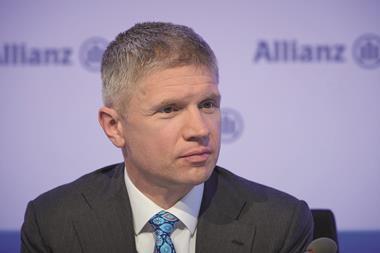The European Insurance and Occupational Pension Authority could in future include environmental, social and governance (ESG) risks in its stress tests of pension funds, the European Commission-appointed High Level Expert Group (HLEG) on sustainable finance has suggested.
The idea was included in a wide-ranging interim report on its work to help develop an EU strategy on sustainable finance, published today.
The other European Supervisory Authorities (ESAs) could do the same, the report said, identifying climate-related risks as the most “obvious”.
However, this should only happen once “sufficient expertise on sustainability has been built up to avoid undue scenarios and outcomes”, according to the HLEG.
It highlighted this as an area of “policy direction” for the European Union, saying the ESAs “should build sufficient expertise on sustainability issues, scenario analysis and general ESG factors related to medium and long-term risks”.
It specifically recommended that the role of the ESAs in assessing ESG-related risks be enhanced.
The European Systemic Risk Board last year recommended that stress tests of European pension funds cover climate-related risks.
The HLEG’s report set out eight recommendations in total in its report.
It recommended that the EU develop a classification system and establish an official European standard and label for green bonds and other sustainable assets.
Commissioners Valdis Dombrovskis and Jyrki Katainen said in their introduction to the report: “These labels will provide the confidence and trust in sustainable and green products needed for investors to fund the transition to the low-carbon economy.”
PensionsEurope, the trade body for European pension funds, welcomed the classification and label recommendations.
However, Matti Leppälä, secretary general of the association, cautioned against introducing new rules and obligations for the European pension fund sector, saying that the HLEG’s report included suggestions on revising the European pension fund directive IORP II.
“The new IORP II directive includes many provisions on ESG, as part of risk management and investments,” he said. “It would be advisable to first see the impact of these new rules before expanding them.”
ESG ‘integral’ part of fiduciary duty
The HLEG noted that the IORP directive took sustainability issues into account, but said that it and other directives would need to be reviewed to implement “the clarification of fiduciary duty and sustainability”.
The HLEG has recommended it be clarified that managing ESG risks is an integral part of fiduciary duty. A single set of principles on fiduciary duty and the related concepts of loyalty and prudence should be established in the European Union, according to the HLEG.
Stefanie Pfeifer, chief executive of the Institutional Investors Group on Climate Change (IIGCC), said “the identification, disclosure and effective management of the huge physical and transition risks posed by climate change” must be at the core of any “functional definition” of fiduciary duty.
“We therefore endorse the call by HLEG for the recent recommendations from the FSB’s Task Force on Climate-related Disclosures to be integrated in a way that advances EU leadership on this agenda and provides greater legal certainty alongside efforts to ensure an international level playing field,” she said.
The other recommendations set out by the HLEG were to:
- unlock investments in energy efficiency through relevant accounting rules;
- strengthen ESG reporting requirements;
- introduce a “sustainability test” for EU financial regulation; and
- create an organisation dedicated to developing and structuring infrastructure projects and matching them with investors.
The report said the group had identified “dual imperatives” for the European financial system.
The Commission said it would start exploring the HLEG’s early recommendations “as of now”.
The group is due to present a final report at the end of 2017 and will continue to examine other policy areas, such as integrating sustainability considerations in ratings.
The report can be found here.









No comments yet